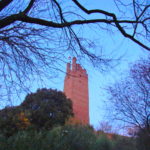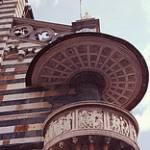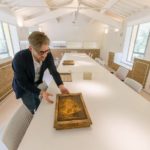The Marble Quarries of Carrara

Not only are the Apuan Alps (Alpi Apuane) and the Tuscan-Emilian Apennines (Appennino Tosco-Emiliano) natural boundaries between two distinct regions, they are also extraordinary chains of mountains dividing two worlds differing in climate and culture, the North and the Mediterranean.
From the Apuan Alps, which soar to two thousand meters, there are the most stunningly spectacular vistas. At a glance, the eye can observe both the brilliantly blue sea of the Tuscan coast and the gleaming white marble quarries.
No other place on earth has marble like Carrara. In fact, the Ancient Romans began extracting the marble of Carrara to ship back to Rome for use in their monuments and palazzos. The Renaissance was another boom period for Carrara as marble was used extensively in Florence, Venice, and Rome. Many sculptures of the period were made using Carrara marble. For example, Michelangelo personally selected the block of Carrara marble he would use to sculpt his David.
Meet the guide and visit:
- A marble sawmill and its workshop (closed Sundays and holidays). Learn about the machinery and tools used to transform blocks of marble into finished products.
- An active quarry to gain insight into the different methods used for marble extraction from Roman times to the present. We also walk through the three marble basins by way of the old galleries of the Marmifera, the private marble railway of Carrara.
- A sculptor’s studio (closed Sundays and holidays)
It is possible to change or extend the itinerary to include a visit to the city of Carrara and see the Fortress and Palazzo Cybo-Malaspina, the Cathedral, the medieval walls, and the colorful Renaissance Piazza Alberica.




